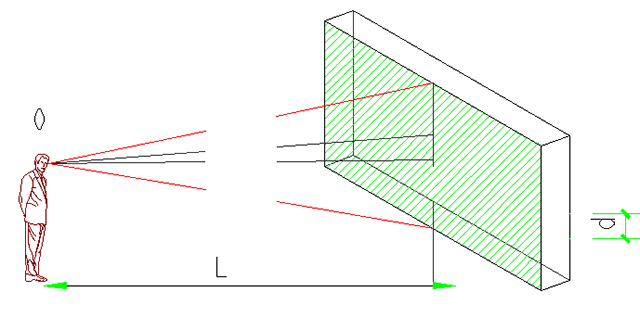Project Overview
1.1 Background
In recent years, with the rapid development of LED display technology, the technologies in color, high-definition and stitching technology of large scale are becoming more and more mature. Because of the traditional massive sets and monotonous tableaux, the performing art venues including stage, theater are mostly designed for one-time use. However, due to the dazzling video scenes, flexible tableaux, changeable scene style, LED display becomes one of the essential products in arena show.
1.2 Satisfactions
1、LED display video source playback function: video program playback, single function, screen segmentation and combination function; sound and tableau complete synchronous playback controlling function; other video signal source access function etc.
2、Changeable structure and tableaux: To perfectly respond to the plot and stage machinery in the performance scene, LED display can reveal verisimilar atmosphere and passionate environment to reinforce the interaction between performer and audience.
3、Advancement and easy operation
(1)Through the synchronization system, video, audio and stage lighting can control the play with audio equipment, by which synchronization of sound and tableau is achieved perfectly. Out-sync problems in special audio and video like lightning, coaster, drums are solved. Also the difficulty in hand operation is reduced.
To activate the atmosphere, the video shot by camera can be displayed partially and arbitrarily on the site. Also pictures can be sent to the screen through the mobile phone or iPads , to achieve good interaction between the audience and guests, and increase the interest of the program.
(2) The resolution of image output is easy to adjust. Because the pixel pitch of LED display number is fixed, the broadcast control system can be adjusted according to the output performance of the video screen size, both nonstandard and standard size, and according to the change of the program, it can be adjusted flexibly and conveniently.
Easy operation. The program on all big screen can be controlled by a main control system and only one operator. The system can also control multi-channel signals and solve the lasting problems of non synchronous playback on several large screen. According to the program form for broadcast control layout, you can easily broadcast the content of the video.
The broadcast control system is compatible with high-definition video signals, PPT, pictures, DVI, HDMI, high - definition cable television signals and other mainstream media formats, to achieve common use of the media and program source. The system can deal with the input of all current video formats and connect the common video signals into the system.
4、Scalability and Economy
The LED display, control and output ports are scalable. According to the requirements of the stage, we can control the color screen, water curtain, 3D, holographic projection and other equipment.
5、Stability of System
The system is based on SC (server and controller) network control architecture. With modular design with peripheral equipment, the system operates stably. The control part of the screen adopts system hot backup configuration, to ensure the normal performance.
Solution
2.1 Design principle
Because of the increased convenience and digital control of LED display, it is more and more used in large-scale stage performances. As the background of the stage, by advanced composed video, the LED display screen can display the background pictures which closely related to plot to strength interaction. Therefore video is played fluently; the performance is more vivid; audiences have a better view experience. It enables the stage design more chance to maximize its effect. The modern technology and festival atmosphere are perfectly combined together. The design and plot matched precisely, which gives audience a wonderful visual experience. It is difficult for the traditional stage equipment to achieve good stage effect. Compared to traditional stage’ ways of display of painting and projection, LED display screen, adopting visual fusion of the equidistant discrete luminous points, forms continuous pictures on the screen. Therefore, pixel pitch is of vital importance in choosing LED screen.
Resolution is defined as the capability of eyes to distinguish the details of image. It can be measured by resolution angle(θ). Actually, θ is very small. It is roughly in proportion to the distance of two close points, and is inversely proportional to the viewing distance (L), θ= d/L (RAD) =3438d/L (points). The reciprocal of the resolution angle is the resolution. Resolution is also related to illumination and contrast. Normal sighted people, with moderate brightness and contrast, θ=1'~1.5'. In the case of a fixed distance, if the angle of the two adjacent pixels is smaller than the angle of resolution, the human eye cannot distinguish. If it is larger than the resolution angle, there will be a sense of granular. So the visual effect is affected. We know that if the minimum angle that one eye can distinguish is less than 1, then when the distance between object and pupil is 25cm (physical distance), the distance between the two point is 0.1mm.

With the theory above, based on the distance(L) of the screen to the first row of the audience and the slim background and low illumination of theatre low illumination, θ is 1.5 '. Through calculation we can get the ideal pixel pitch of display. According to the principle of human eye resolution, the human eye can distinguish the adjacent black and white horizontal lines arranged in vertical direction. It is called vertical resolution. (see as fig 1) when human eyes can tell the black and white lines with a certain width of D and in the distance L, θ is 1.5. If the distance of a theatre is 12m, d=1.5 * 12000 / 3438 = 5.24mm, the actual proposal is the product with P4.81.
After choosing the right pixel pitch, the proper installation methods, such as stacking and hanging, can be selected according to the stage needs of the theatre.
2.2 Structure design
1. Because there are various types of large stage and theater stage design, functional, inevitably, the requirements for function, technology and art are relatively high. Designers need to master a variety of knowledge in order to do a good job of designing. A perfect stage should include: main platform, side platform, scenery, stage structure, mechanical power, lighting, sound, image processing, etc.. With different stage design and theater theme, the stage design is quite different.
2. The sound system can be configured according to the requirements of stage and theater artistic performance. According to the different environment and the requirements, the system should meet those requirements: the most appropriate sound, high fidelity transmission, the best clarity, well-distributed sound. Sound in accurately connected with image to achieve the best effect.
3. With the development of art, the stage lighting also has higher requirements. It should show the diversity of performance styles and forms. That is to switch lights quickly in the process of performance, and change the lighting accurately, delicately and fluently. Performance lights unconsciously change the effect of light and shade to achieve a sense of changing space. This requires the stage lighting layout, lights, lighting control equipment can module good image, reveal bright color and adjust the changing rhythm to form the performance atmosphere in visual and sound aspects, and influence the emotion of audience. Thus actors, audience, environment are connected, which coincides with the contents of stage.
The design, configuration and function of the lighting system should meet the modern stage theatre, music hall, studio and other on-site lighting requirements, and fully consider the rationality of the system, scalability, forward-looking and a good price, to have a leading position in a long time.
4.The stage of architectural design should provide the machine type, position, size and quantity, space for installing the machines on- and off- stage, equipment load, internal force analysis, embedded parts, electricity load and console position requirements, to meet the stage machinery installation, operation, maintenance and operation.
Stage machinery must operate technically to ensure safe operation. In the process of operating, there should be corresponding sound and light warning signals, which shall not affect the performance. The distance between the movable platform and the motionless table shall not be greater than 5mm. The height difference shall not be greater than ±3mm. The horizontal swing clearance of the stage mechanical table shall not be greater than 5mm; the height difference shall not be greater than ±3mm.






